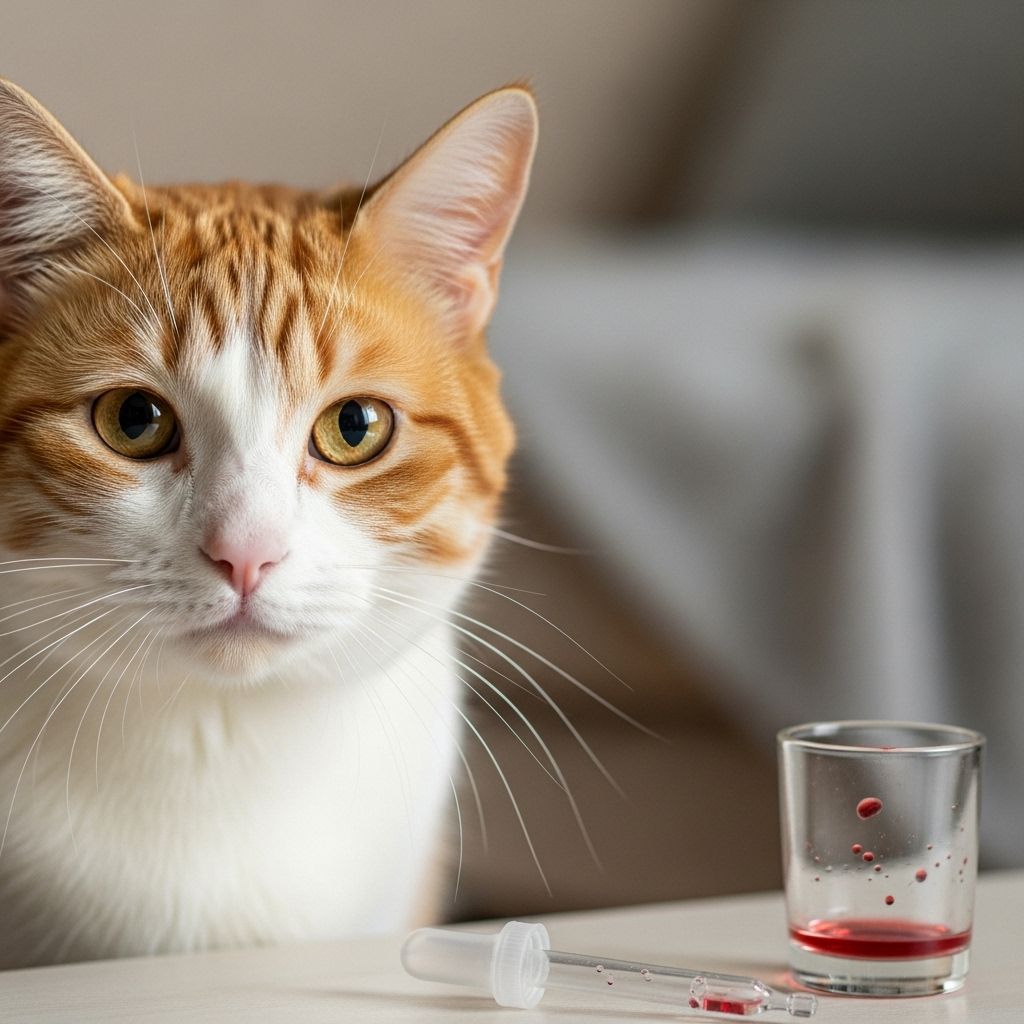Cat Urinary Tract Infection: A Comprehensive Guide For Cat Owners
Learn everything about feline urinary tract infections and how to protect your cat's urinary health

Image: HearthJunction Design Team
UTIs in Cats: Understanding Urinary Tract Infections in Your Feline Friend
Urinary tract issues can be uncomfortable and painful for cats, leading to concerning symptoms that may alarm pet parents. However, true urinary tract infections (UTIs) are surprisingly less common in cats than many people believe. Only about 1-3% of cats showing signs of urinary tract disease actually have a bacterial infection. Understanding the difference between a UTI and other urinary conditions is crucial for ensuring your cat receives appropriate treatment.
What Are Urinary Tract Infections in Cats?
A urinary tract infection occurs when bacteria enter and colonize any part of the urinary tract, including the kidneys, ureters, bladder, or urethra. In cats, UTIs primarily affect the bladder and urethra, which make up the lower urinary tract. Because UTIs share symptoms with several other urinary conditions, proper diagnosis by a veterinarian is essential.
UTIs in cats are typically bacterial in nature. These bacterial infections generally respond well to appropriate antibiotic treatment when diagnosed correctly. However, chronic infections or those that don’t respond to standard treatments may require additional testing to identify underlying causes that might be making your cat more susceptible to recurrent infections.
How Common Are UTIs in Cats?
Despite the common perception that cats frequently suffer from UTIs, true bacterial urinary tract infections are relatively uncommon in cats, especially in younger felines. When cats show signs of urinary problems, they’re more likely to be experiencing other conditions that fall under the umbrella term Feline Lower Urinary Tract Disease (FLUTD).
In fact, bacterial UTIs account for only a small percentage of all feline urinary cases. UTIs are more common in older cats (particularly those over 10 years of age) and cats with certain underlying health conditions that may compromise the urinary tract’s natural defenses.
Causes of Urinary Tract Infections in Cats
Both acute (sudden) and chronic urinary tract infections in cats are primarily caused by bacterial infections. The bacteria involved typically originate from either:
- The gastrointestinal tract
- The lower portions of the urinary or reproductive tract
Several factors can increase a cat’s susceptibility to developing a UTI:
Age
Senior cats (particularly those over 10 years old) have a higher risk of developing UTIs compared to younger cats. This increased risk is often associated with age-related changes in immune function and the presence of other health conditions.
Underlying Medical Conditions
Cats with certain health issues are more likely to develop bacterial urinary tract problems. These conditions include:
- Diabetes mellitus
- Kidney disease
- Hyperthyroidism
- Conditions that cause immunosuppression
These health issues can alter urine composition or affect the body’s natural defense mechanisms, creating an environment more favorable for bacterial growth.
Urinary Tract Abnormalities
Structural or functional abnormalities in the urinary tract can predispose cats to infections by interfering with normal urine flow or creating areas where bacteria can more easily colonize.
Symptoms of Urinary Tract Infections in Cats
Identifying the signs of a potential UTI in your cat is crucial for seeking timely veterinary care. The symptoms of a urinary tract infection can overlap with other urinary conditions, which is why proper diagnosis is essential. Common signs that your cat might be experiencing a UTI include:
- Frequent attempts to urinate
- Straining in the litter box (dysuria)
- Crying out or showing signs of pain while urinating
- Passing only small amounts of urine
- Blood in the urine (hematuria)
- Urinating outside the litter box
- Excessive licking of the genital area
- Changes in urinary habits
- Increased water consumption
In severe cases or when a urethral obstruction occurs (more common in male cats), you might notice your cat making multiple, unsuccessful attempts to urinate. This is a medical emergency requiring immediate veterinary attention.
Diagnosing UTIs in Cats
Since the symptoms of UTIs can mimic those of other urinary conditions, proper diagnosis by a veterinarian is crucial. The diagnostic process typically includes:
Physical Examination
Your veterinarian will perform a thorough physical examination, paying special attention to the abdomen and urinary tract.
Urinalysis
A urinalysis is essential for diagnosing UTIs and ruling out other urinary conditions. This test examines the physical and chemical properties of the urine and looks for abnormalities such as:
- Presence of bacteria
- Increased white blood cells (indicating inflammation or infection)
- Red blood cells
- Abnormal pH levels
- Presence of crystals
- Protein levels
Urine Culture and Sensitivity Testing
If a bacterial infection is suspected, your veterinarian may recommend a urine culture. This test involves growing any bacteria present in the urine sample to identify the specific type of bacteria causing the infection. Sensitivity testing then determines which antibiotics will be most effective against that particular bacterial strain.
Additional Diagnostics
In some cases, particularly for recurrent or complicated UTIs, your veterinarian might recommend additional tests such as:
- Blood tests to check for underlying conditions
- X-rays or ultrasound to examine the urinary tract structure
- Advanced imaging to detect abnormalities or stones
Differentiating UTIs from Other Urinary Conditions
Many conditions can cause urinary symptoms similar to those of a UTI. These conditions, collectively known as Feline Lower Urinary Tract Disease (FLUTD), include:
Uroliths (Urinary Stones)
Minerals in the urine can form crystals and eventually stones in the bladder or urethra. These stones can irritate the urinary tract lining, causing inflammation and symptoms similar to a UTI. Diagnosis typically requires imaging tests such as X-rays or ultrasound.
Feline Idiopathic Cystitis (FIC)
This is an inflammatory condition of the bladder with no identifiable cause. It’s one of the most common diagnoses in cats with lower urinary tract symptoms, especially in younger to middle-aged cats. Stress often plays a significant role in triggering FIC episodes.
Urethral Obstruction
This is a life-threatening emergency that occurs when the urethra becomes completely blocked, preventing the cat from urinating. This can be caused by stones, mucus plugs, or inflammatory debris. Male cats are at higher risk due to their longer, narrower urethra.
Treatment Options for Cat UTIs
The treatment approach for feline UTIs depends on the severity of the infection, the causative agent, and whether there are any underlying conditions. Common treatment options include:
Antibiotics
Bacterial UTIs typically require antibiotic therapy. The specific antibiotic and duration of treatment will depend on the bacteria identified through culture and sensitivity testing. It’s crucial to complete the entire prescribed course of antibiotics, even if symptoms improve before the medication is finished.
Pain Management
If your cat is experiencing pain or discomfort, your veterinarian may prescribe pain medication to help keep them comfortable during recovery.
Increased Water Intake
Encouraging increased water consumption can help flush bacteria from the urinary tract. This might include switching to wet food, providing multiple water sources, or using a cat water fountain to entice drinking.
Addressing Underlying Conditions
If an underlying health issue is contributing to the UTI, treating that condition is essential for preventing recurrence. This might involve management of diabetes, kidney disease, or other chronic health issues.
Prevention of Urinary Tract Infections in Cats
While not all UTIs can be prevented, several strategies may reduce your cat’s risk:
Ensure Adequate Hydration
Maintaining proper hydration helps dilute urine and encourages frequent urination, which can flush out bacteria before they cause infection. Consider these approaches:
- Feed wet food or add water to dry food
- Provide fresh, clean water in multiple locations
- Consider a cat water fountain, as many cats prefer running water
Maintain a Clean Litter Box
A clean litter box encourages regular urination and reduces the risk of bacterial contamination. Scoop the litter box at least once daily and perform a complete litter change regularly according to the type of litter used.
Regular Veterinary Check-ups
Routine wellness exams can help detect and address urinary issues before they become serious problems. This is especially important for senior cats and those with known risk factors for UTIs.
Manage Stress
Stress can contribute to urinary issues in cats. Creating a calm environment and providing environmental enrichment can help reduce stress-related urinary problems.
When to Seek Veterinary Care
Some urinary conditions, particularly urethral obstruction, are life-threatening emergencies requiring immediate veterinary attention. Contact your veterinarian immediately if you notice:
- Your cat repeatedly attempting to urinate with little or no success
- Signs of extreme pain during urination attempts
- Complete inability to pass urine
- Lethargy or depression
- Vomiting
- Crying or howling in pain
Even if the symptoms seem mild, it’s best to consult with your veterinarian whenever you notice changes in your cat’s urinary habits. Early intervention can prevent complications and provide relief for your cat.
Frequently Asked Questions About Cat UTIs
Q: Are female cats more prone to UTIs than male cats?
A: Among older cats, females tend to develop UTIs more frequently than males. However, male cats are at higher risk for urethral obstruction, which is a life-threatening emergency requiring immediate veterinary care.
Q: Can I prevent UTIs by changing my cat’s diet?
A: While diet alone might not prevent all UTIs, feeding a high-quality diet appropriate for your cat’s life stage and health needs can support urinary tract health. For cats with recurrent urinary issues, your veterinarian might recommend a specialized urinary diet.
Q: How long does it take for a cat to recover from a UTI?
A: With appropriate antibiotic treatment, most cats show improvement within a few days. However, it’s essential to complete the entire prescribed course of antibiotics, which typically lasts 7-14 days, to ensure the infection is completely eliminated.
Q: Can stress cause urinary problems in cats?
A: Yes, stress is a significant factor in many feline urinary issues, particularly Feline Idiopathic Cystitis. While stress doesn’t directly cause bacterial UTIs, it can contribute to conditions that make infections more likely.
Q: Are certain cat breeds more prone to urinary problems?
A: While UTIs can affect any cat, some studies suggest that certain breeds may have a higher predisposition to urinary issues in general. Persian cats, for example, may be more prone to forming certain types of urinary crystals.
Understanding the causes, symptoms, and treatment options for UTIs in cats can help you ensure your feline companion receives prompt and appropriate care when urinary issues arise. Always consult with your veterinarian if you notice any changes in your cat’s urinary habits, as early intervention is key to preventing complications and ensuring your cat’s comfort and health.
References
- https://www.webmd.com/pets/cats/cat-urinary-tract-problems
- https://www.guilfordjamestownvet.com/site/blog-greensboro-vet/2021/05/31/cat-urinary-tract-infection
- https://vcahospitals.com/know-your-pet/urinary-tract-infections-utis-in-cats
- https://www.petmd.com/cat/conditions/urinary/utis-cats-urinary-tract-infections-cats
- https://www.avma.org/resources-tools/pet-owners/petcare/feline-lower-urinary-tract-disease
Read full bio of Srija Burman












